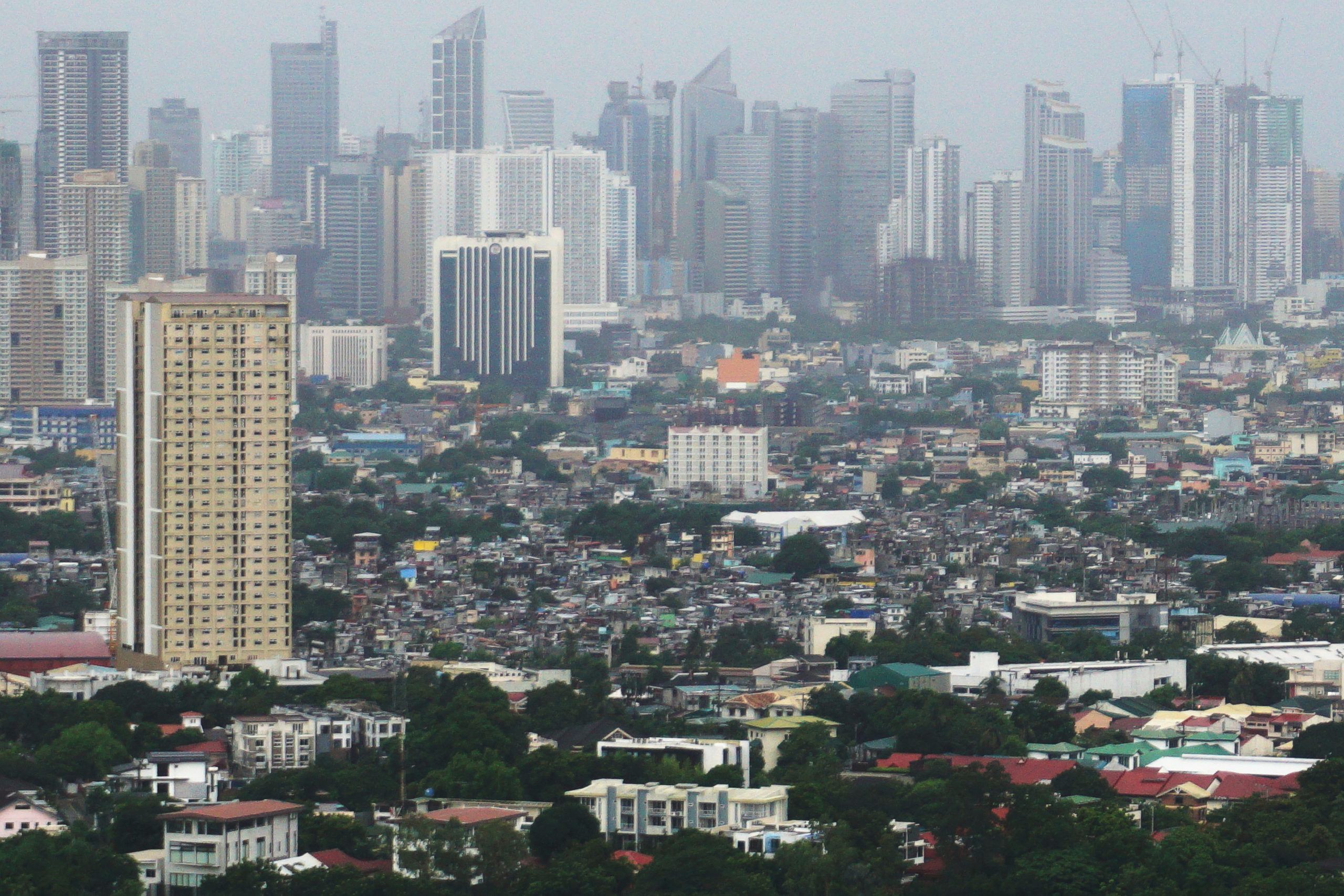
The financial district of Makati (Photo by TED ALJIBE / AFP)
Improvements in “institutional and policy settings” prompted S&P Global Ratings to raise its credit outlook on the Philippine government to “positive,” opening the door for potential upgrade to the highly coveted “A” rating.
While S&P kept its “triple B plus” investment grade rating for the Philippine sovereign, the global debt watcher upwardly revised its outlook from “stable,” citing “effective” policymaking that has delivered “structural improvements to the country’s credit metrics.“
READ: PH’s high credit rating to bring more investments, livelihood – Marcos
A positive outlook indicates a good chance for the country to finally bag its first ever A-rating from one of the “Big Three” credit rating agencies in the next one to two years.
“It reaffirms our stable economic and political environment and that we are on track to achieve a growth-enhancing fiscal consolidation. We have a comprehensive Road to A initiative to ensure that we secure more upgrades soon,” Finance Secretary Ralph Recto said.
Article continues after this advertisement
The Philippine government also holds investment grade rating from Fitch Ratings (BBB) and Moody’s Ratings (BAA2), both of which are two notches away from the entry-level A credit rating.
Article continues after this advertisement
S&P’s rating scale ranges from D, the lowest, to the highest rating of AAA. Should the debt watcher decide to upgrade the Philippines’ badge of creditworthiness, the next level for the country is A-.
The higher rating means better perception of lenders on a borrower’s ability to pay its obligations. This would result in lower interest rates for issuers like the government, which can channel the interest savings to more productive spending like social programs and infrastructure build-up.
That said, Bangko Sentral ng Pilipinas Governor Eli Remolona Jr. welcomed the decision of S&P.
“This reflects the work the government has done to improve the economic, fiscal and monetary environment, enabling strong growth to continue,” Remolona said.
‘Above-average’ growth
Explaining its decision, S&P said the ratings outlook reflected the country’s “above-average economic growth potential.” The credit rater expects the local economy to grow by 5.5 percent this year, supported by “recovery in net export performance along with contained inflationary pressures.”
On the fiscal side, S&P expects the Marcos administration to continue its “well-established” plan to cut the budget deficit and government debt, which has yielded “constructive development outcomes.”
What it will take
But S&P said it would take “several years” for the balance sheet of the government to recover to prepandemic levels, projecting the budget deficit—as a share of the economy—to average around 3.3 percent over the next three years.
“We believe the normalization of economic growth in the Philippines will help to lower the general government deficit to 4 percent of gross domestic product in 2024 from 4.5 percent in 2023,” the credit rating agency said.
“Stickier inflation, high interest expenditure and increased public spending will prevent a faster reduction of the deficit,” it added.
Moving forward, S&P said it may finally give the Philippines’ the coveted A rating if the country could further improve its buffers against external shocks. Achieving a “more rapid” fiscal consolidation may also trigger an upgrade.
But the outlook may revert to “stable” if economic recovery falters and leads to deterioration of the national fiscal and debt positions. INQ

